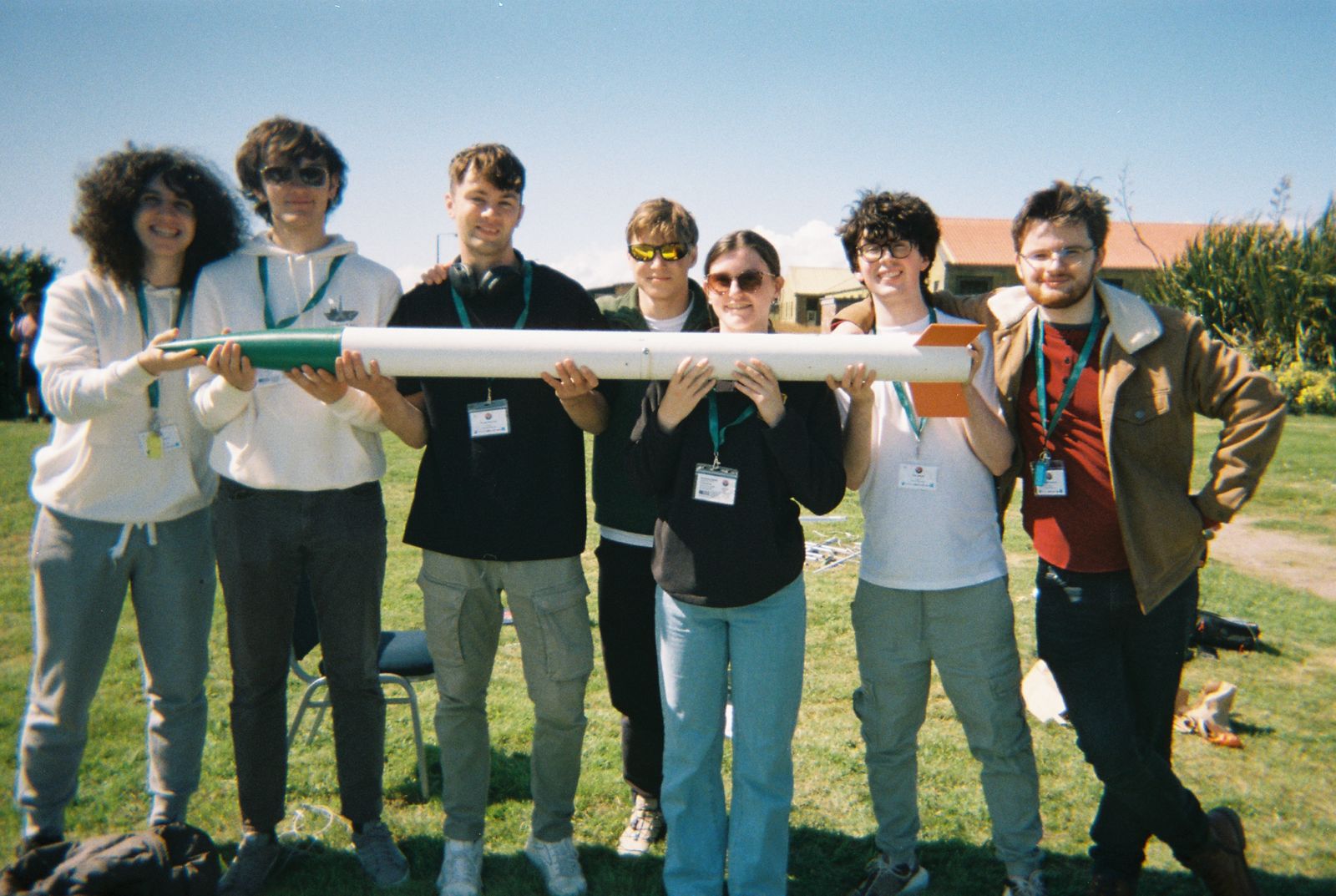School of Engineering's Rocketry and Space Exploration Society launch high-powered rocket

UCC reached great heights in a recent rocketry competition. The Rocketry and Space Exploration
Society, one of UCC’s newest engineering society, hit it big in their first competitive appearance.
The team recently appeared in Mach-25, a rocketry competition held in Machrihanish airbase in
Scotland. Here, the team launched Prometheus, their first high-powered rocket.
This project has been long in the works and a big achievement for the society. Development of
Prometheus began in November last year. Being the society’s first high-powered rocket, and the second
rocket ever manufactured by the society, it was a huge undertaking for the budding team.
This was known going in of course, with the main goal of the competition to develop skills and
knowledge of high-powered rocketry. Development was slow at the start, but once the growing pains
were figured out it was full steam ahead.
The rocket was fully designed and manufactured by the society’s engineering team. Due to supply
issues, the body tube was made of cardboard, later reinforced with fiberglass to withstand the high
pressures and stresses of flight. The nosecone and fins were all designed, and 3D printed using PLA. The
bulkheads and centering rings were all made from plywood.
Inside the rocket was a CanSat. The CanSat contained all the important electronics to measure the
speed, acceleration, and altitude of the rocket. Most importantly however, it contained a GoPro to
record the whole flight.
While not sounding like the most high-tech rocket, every part was strenuously tested and simulated
before flight. Prometheus would be launched will full confidence in each part.
The team arrived in Scotland on the first of July, meeting the already well-established teams from other
universities, including the HiPR team from the University of Limerick.
Nerves were high on launch day. The team was already scheduled to be the last to launch. Throughout
the day, the launch window kept getting delayed. It was the last day of the launch, so if they didn’t got
today they couldn’t go at all until next year.
Thankfully, the stars aligned, and the team was given the go ahead to launch. At around 7:55pm,
Prometheus was launched, much to the relief of everyone involved. The whole launch was streamed
from the ground on their Instagram, @uccrocketrysociety, with the footage still being up there.
The rocket reached a max height of 2259 metres and a speed of 313 metres per second, that being 90
percent the speed of sound. These final results were close to what the team had anticipated.
The Cansat was recovered the next day in a nearby field. The camera in the Cansat recorded the entire
flight, from deployment to the fall to the ground. It also captured stunning views of Machrihanish
airbase from 2km in the sky.
The team was overjoyed with the launch. Finally, the late nights working on the project had paid off. It is
a big achievement to just make it off the launch pad so the team couldn’t be happier. In the end, they
placed 5th out of 11 total teams in their category, proving their place in the amateur rocketry scene.
Afterwards, all teams gave a presentation, sharing what they’ve learned and experienced with everyone
else. They also met a few celebrities in the scene, including Dan Tani, a former NASA astronaut who had
been on the space station. Pictures were taken and a talk was secured for later on in academic year in
UCC.
RSES have no plans on slowing down, with plans of a liquid powered motor and a huge recruitment push
throughout the year, Prometheus and Mach25 were just stepping stones to something much bigger.
School of Engineering and Architecture
Scoil na hInnealtóireachta
Contact us
Electrical Engineering Building, UCC, College Road, Cork.
